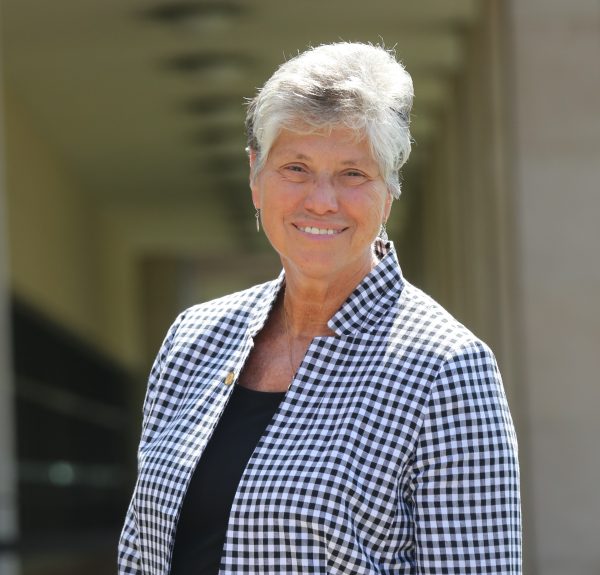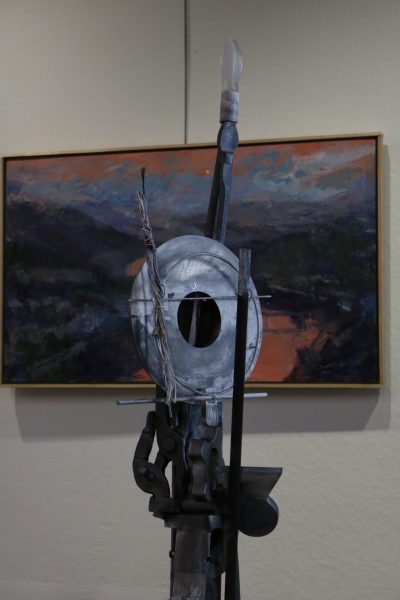Update: Editorial Board talks with Sr. Anne Munley
October 18, 2015
On Friday, October 2, The Wood Word’s Editorial Board sat down with Sr. Anne Munley, IHM, Ph.D., president of Marywood University.
The one-hour discussion covered various topics including the new Learning Commons and its dedication, the university’s current financial situation, the string of flyers that have circulated around the Marywood community and the consulting firm recently hired to lead the university through a process of re-prioritization.
Here are highlights from the discussion updated with new information and audio clips from the interview.
On the Pope’s visit to the U.S.
Sr. Anne began the meeting by welcoming the Editorial Board to her office and reflecting on her recent trip to see Pope Francis and his historical address.
“I recently had a fabulous opportunity to be present at and participate in the Pope’s first historic address to the joint session of Congress. And what really, really struck me, and I’ve spent a lot of time reflecting on that, was that there was such a spirit of unity and dialogue. […] There was a lot of coming together that was galvanizing and I really liked his emphasis on the importance of […] discussion.”
On the flyers distributed around campus
Sr. Anne said that the “information contained in the flyers distributed the week prior to the Centennial were misrepresentations [and] distortions, and the accuracy of the information is questionable.”
Prior to the meeting with Sr. Anne, The Wood Word was able to verify some information listed on the flyer including the purchase of the president’s house located at 2207 Adams Ave. on June 29, 2010 for $310,000, according to the Lackawanna County Assessor’s Office website.
The Wood Word also verified that Marywood’s Standard & Poor’s bond rating has fallen twice since 2013. According to BondsOnline, Marywood’s bond rating fell from BBB to BBB- on Oct. 16, 2013, and again to BB+ on Jan. 16, 2015.
Also verified was information about the purchase of South Campus for $500,000 including expected renovations of $25 million. The Wood Word reported on this on March 22, 2015, according to Joseph X. Garvey, vice president for business affairs and treasurer, it costs between $200,000 and $250,000 per year to maintain South Campus.
At the time of this article’s original publication, the cost of renovations to the presidential house, listed on the flyers as $950,000, was still unverified. While The Wood Word still has not been able to verify the cost, building permits for the renovation obtained from Scranton’s Office of Licensing, Inspection & Permits suggest that the projected costs were not that high.
According to the permits, the work value of the entire project was $88,000–a figure that is less than 10 percent of the figure of $975,000 asserted by the flyers.
At the time of the meeting Sr. Anne said, “[…] the accuracy of that [the price of the renovations listed on the flyers], I’m not really able to discuss the details of that with you, but I can tell you that I have used that facility extensively for purposes of fundraising.”
Also according to Sr. Anne, the fountains located in Memorial Commons, along with the amphitheater, which hasn’t been built yet, have been fully paid for by donors through the Bold Heart campaign.
She added that the operational budget of the University has not been affected by the construction of the Learning Commons, which will be paid for over time and worked into the University’s budget.
On the current financial situation
Because Garvey has imposed prior review limitations on The Wood Word, editors asked Sr. Anne about many of the claims made in the flyers regarding the state of Marywood’s finances.
Sr. Anne verified that Marywood had a $2 million credit line with PNC bank, but when Marywood requested a credit line increase from PNC, the bank chose not to increase the university’s credit.
Marywood then went to First National Community Bank, which provided the university with a $6 million line of credit; however, Sr. Anne said that the university has not drawn anything from this credit line and it will return to $2 million as of November 1.
Peter Kilcullen, associate vice president for marketing & communications, who joined Sr. Anne in the meeting, stated that every summer, the university faces challenges to meet payroll given cash flow deficits linked to tuition payment timelines.
“So you have no income until the fall and your income from the spring is dried up so you need to carry your payroll through,” concluded Kilcullen.
The lines of credit help the university to meet its obligations until cash flow returns. According to Sr. Anne, 65 percent of Marywood’s revenue comes from tuition.
Sr. Anne added that the financial challenge Marywood is facing is the same challenge all institutions of higher education are facing due to the economy and across-the-board declines in enrollments nationally because of dips in the population of college-aged students.
However, Sr. Anne said that all enrollment budget goals created this year were met aside from the population of residential students, which is down. The number of graduate students enrolled this year increased.
On re-prioritization
Editors asked Sr. Anne about Larry Goldstein’s re-prioritization process, and she praised the process for its transparency.
“The Goldstein process is a very proactive process that helps us look at every dimension, every program academically, and every support program, with the idea of engaging in a very transparent way the entire community in helping to assess where the resources are with the idea of being able to leverage resources to help certain things grow,” Sr. Anne said. “And if certain things have completed their function, then you reallocate…It’s been done, and it’s well-done.”
Editors asked Sr. Anne why Goldstein’s method is being used instead of the retrenchment policy that is outlined in the faculty handbook and which requires the declaration of financial exigency.
According to the page of the handbook, this policy entails an Ad Hoc Committee on Retrenchment to be called by the Faculty Senate to study all “appropriate documents” relating to the university’s finances and ultimately “transmit recommendations to the President of the University.”
Sr. Anne, however, said that Goldstein’s process does not necessarily cancel out the retrenchment policy.
“These two processes can go on at the same time,” Sr. Anne said. “I think that we have financial challenges, as do many other institutions…We have a plan to address these challenges. And…the Goldstein process will be one of those means to address these challenges.”
On the culture of fear
Editors asked Sr. Anne why she thinks people in the Marywood community, including administrators, are unwilling or afraid to talk with The Wood Wordon the record about Marywood’s challenges.
Prior to the discussion with Sr. Anne Vice President of Business Affairs, Joseph X. Garvey, said he would only talk with The Wood Word under conditions of that constitute prior review, which is a form of censorship.
“I think that the accuracy factor is a factor, and in certain areas, accuracy is really critical, and I think that’s basically some of the concern,” said Sr. Anne.
However, she did not elaborate with specific examples regarding inaccuracies from The Wood Word.
On the possible vote of no confidence
Editors asked Sr. Anne Munley her thoughts on the potential for a vote of no confidence in her leadership by the faculty. As reported by The Wood Word last week, faculty distributed information on such votes at recent Faculty Senate meetings. Just yesterday, a new flyer distributed to faculty by “Faculty for a Better Marywood” provided rationales for issuing a no confidence vote.
A recent flyer was distributed to staff on campus, this time giving information on a potential vote of no confidence in…
Posted by The Wood Word at Marywood University on Tuesday, October 6, 2015
“If this [vote of no confidence] were to come to pass, it would be personally and professionally disappointing. I think that every decision I have made as President has been directly related to the common good and advancement of this university with a special emphasis on the welfare of the students. Everything has been very carefully decided. I have worked in close collaboration with the cabinet, and I enjoy a lot of support from our board. [….] I’ve given it my wholehearted energy, and I think that in time the fruit of these decisions will be very manifested, and I draw great peace from that.”
On trying times on campus
Sr. Anne said: “This is a time to pull together in unity. That’s the thing I was most touched by when I saw Pope Francis is that he’s calling everyone together and to truly be our best selves. I see such goodness in this community, in our students and in our faculty, and I say it’s time we pull together.”
Patrick Kernan and Paul Capoccia contributed to this report.
Contact the writer: [email protected]
Twitter: @SataraLynnTWW














